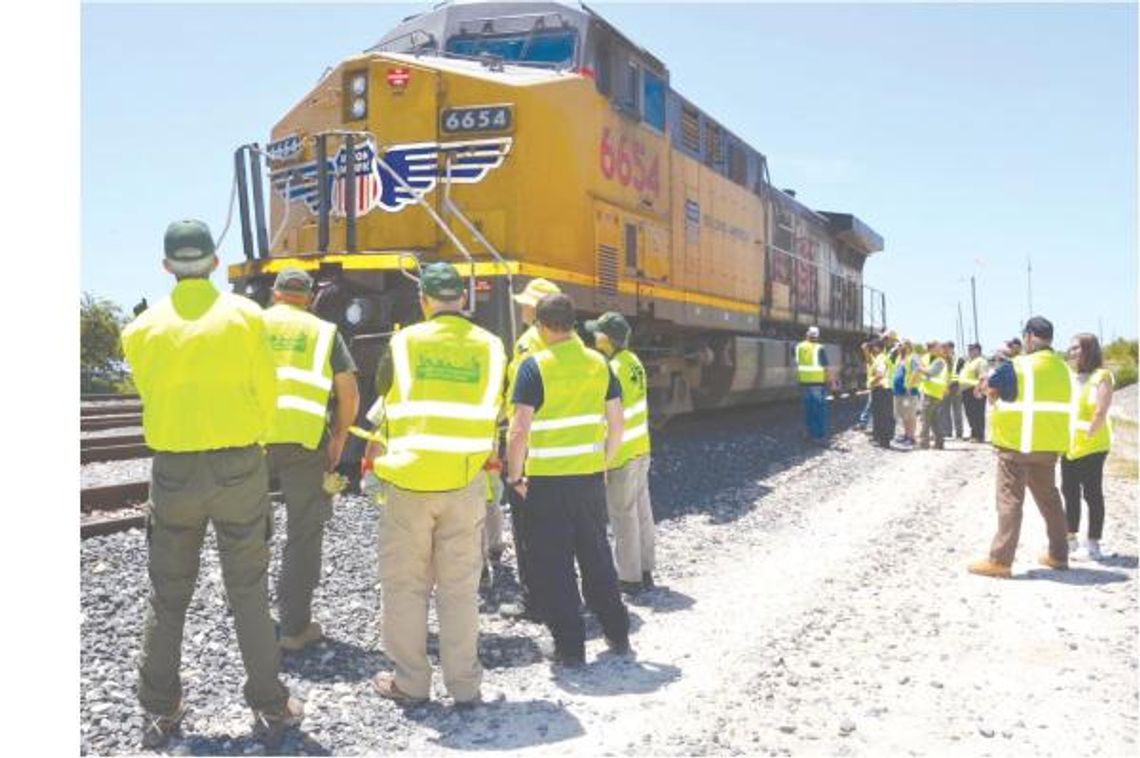Members of law enforcement, firefighting and emergency management staff recently participated in specialized public disaster preparedness training, with a focus on freight and passenger railroad safety and investigation in Texas.
Union Pacific Railroad and Texas Operation Lifesaver hosted the one-day Railroad Investigation and Safety Course on Tuesday, Aug. 8 for a roomful of first responders, including a large continent of volunteers from the Community Emergency Response Team for Hays and Travis counties.
The course provided participants with a concentrated education on rail safety and enforcement, touching on aspects of railroad operations, motorist behavior and collision investigation techniques. These are vital to area investigators and law enforcement personnel in the event of a catastrophic accident or environmental crisis — raising the bar for public disaster preparedness in Central Texas.
The course utilized a combination of authorized volunteer speakers and expert instructors and was divided into two components, beginning with classroom instruction at the Hays County Public Safety Building and concluding with hands-on field exercises held at the Union Pacific facility off of Centerpoint Road.
Of particular importance during the course were the U.S. Department of Transportation’s Federal Railroad Administration guidelines.
The FRA was created by Congress in 1966, and it oversees highway-rail grade crossings, for example, and what is known as the Emergency Notification System. ENS is currently characterized by prominent blue signs located at railroad crossings. This sign contains information that includes the name of the railroad, the emergency contact number and the USDOT National Crossing inventory number. The course emphasized this is one of the fastest ways for law enforcement to contact the railroad in the event of an emergency.
The course was made possible here by the grant writing expertise of Jessica Devorsky, executive director of Texas Operation Lifesaver, who said the program is a nonprofit public safety education and awareness organization. The program is dedicated to reducing collisions, fatalities and injuries, by “taking something theoretical like safety,” and seeing it transformed here in a practical way to make responses better and safer, Devorsky said.
“The whole course, Operation Lifesaver's Railroad Investigation and Safety Course, is designed to teach first responders, local law enforcement and EMS on railroad 101: railroad terminology, how to properly respond to a railroad emergency, how to investigate one, how to clear the scene,” Union Pacific System Public Safety Senior Supervisor Buck Russel said.
He added that the course also provides a framework for first responders to know how best to educate the community about no trespassing and why they should not go around railroad gates. Russel has been with Union Pacific for 26 years and has been safety supervisor for 12 of those.
“I have a vested interest in my heart for these folks who keep us safe,” he said.
Russel emphasized that first responders are dealing with driver impatience, distractions in a vehicle and excessive speed by motorists, all of which can contribute to highway-rail grade crossing collisions and train derailments.
Russel said they provide these courses as often as they can, and there is no cost to local municipalities.
“At Union Pacific, safety is always job one and having these safety eyes of the men and women of these communities who know how to communicate with us is paramount,” he said.
.png)











